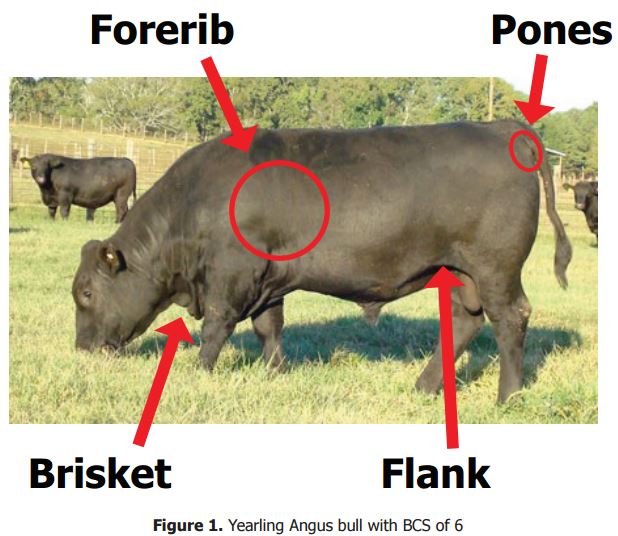



Pre-Breeding Season Bull Management Tips
Each herd bull should receive a breeding soundness exam, routine vaccinations, BCS evaluation, and appropriate supplemental feeding prior to the breeding season, according to advice from the University of Georgia.Proper care of breeding bulls will improve the fertility and percent calf crop in your herd.
The pre-breeding period, the two months prior to the breeding season, is essential for preparing bulls for a successful breeding season. This is particularly important for yearling bulls, says the University of Georgia.
Items to consider during pre-breeding:
• Allow for adaptation period (if in a new environment)
• Conduct breeding soundness exam
• Adjust feeding and provide exercise to achieve a body condition score (BCS) of 5 or 6 before breeding season
• Provide health care
These practices should give your herd sire or clean up bull the best opportunity to endure the breeding season and settle as many females as possible early in the breeding season.
An adaptation period is highly recommended for newly purchased bulls that have been through the marketing and transport processes. This will allow them to become acquainted with their surroundings.
If a bull goes through a sale process or long transport and is immediately asked to breed cows without an adaptation period, the risk for excessive weight loss, injury, or illness increases. This can lead to poor conception as the breeding season progresses.
Breeding Soundness Exam (BSE)
A breeding soundness exam (BSE) is a procedure often performed by a licensed veterinarian or trained professional to determine the potential fertility of a bull.
Make sure that the bulls you develop or purchase have received a BSE 30 to 60 days prior to being turned out with your herd. It should also be done if a problem is noticed or extreme weather has persisted.
Criteria measured during a Breeding Soundness Exam:
General physical qualities
• Feet and leg structure
• Body condition
• Vision
• General health
Reproductive system
• Scrotal circumference (cm)
• Reproductive tract infections
• Penis abnormalities
Semen quality
• Number or concentration
• Motility (has at least 30% moving sperm)
• Morphology (is at least 70% normal)
A satisfactory bull has been determined to be acceptable for all criteria. It is important to note that this is not a guarantee of fertility, but an assurance that nothing was found that would affect potential fertility.
Bulls, particularly yearlings, must be observed to ensure that acceptable libido or sexual desire persist through the breeding season.
The cost of a BSE will vary, but typically this fee is minimal compared to the cost of one open cow or having multiple calves born later in the calving season. If a calf is born 21 days late, that would equate to roughly 50 pounds of lost gain.
Body Condition Score
When developing or purchasing a bull, a correct assessment of body condition score is critical to his breeding performance across the season.
Prior to turning a bull out for service, make sure that he is at an ideal body condition score of around 5 to 6 on a 1 through 9 scale.
A BCS of 6 will include these characteristics, although fat deposition will vary slightly by breed:
• Ribs are not visible
• Noticeable fat covering the forerib (behind shoulder) and each side of the tail head (pones)
• Noticeable flesh in the flank
• Moderate width of brisket (front view)
During the breeding season, bulls can lose 3 pounds a day. Thus, proper body condition during prebreeding is essential for all ages.
Bulls should be fleshy but not fat prior to breeding. Exercise during pre-breeding will help maintain the correct flesh and help build stamina.
Health
The pre-breeding period is an appropriate time for vaccinations and parasite control. Newly purchased bulls from a reputable program should already have been given vaccinations.
Obtain this information from the sale catalog or seller for your herd records. If the bull is purchased without complete health records, revaccinate as your veterinarian recommends.
Owned bulls returning as herd sires should be given appropriate vaccinations and treated for internal parasites. Use external parasite control strategies as needed.
Nutrition
Abundant, clean water and appropriate nutrition in the form of high quality forage, feedstuffs, and mineral supplements improve the health and potential fertility of your herd bull.
Supplement mature bulls as needed to achieve a BCS of 5 or 6 (see Table 1). A working herd bull will use this energy reserve during the breeding season.
Yearling bulls weighing 1,500 pounds need to consume roughly 2.5% of their body weight on a dry matter (DM) basis. This requires good quality forage or hay and supplemental feed in most cases to ensure that requirements for crude protein (CP) and total digestible nutrients (TDN) are met.
A nutrient analysis for each feedstuff is essential. Weight of each bull should be monitored to insure they continue to gain approximately 2 pounds of body weight (BW) per day prior to the beginning of the breeding season or 2 years of age.
This will likely require supplemental feeding. The US National Research Council’s Nutrient Requirements for Beef Cattle list the percentages in Table 1 as the minimum daily intake (DM) required for a 1,500-pound bull to gain 2 pounds per day.




